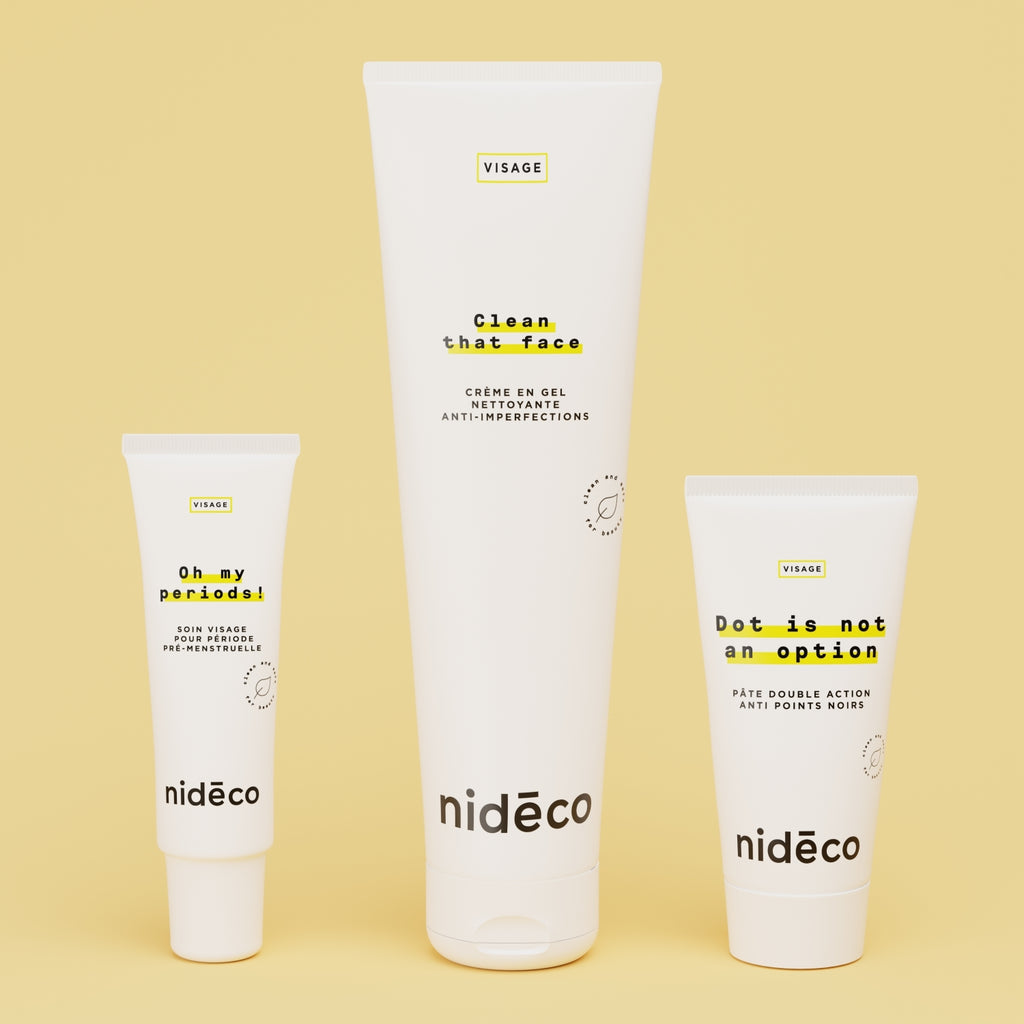What is the difference between moisturising and nourishing?

In the world of skincare, you've probably heard of hydration and nutrition. But do you really know the difference between these two terms? Although often used interchangeably, moisturizing and nourishing the skin are two distinct actions, essential for maintaining a radiant complexion and healthy skin. Let's find out together how to identify what your skin needs and how to give it what it needs!
The skin and its hydrolipidic film: the role of water and lipids
To understand the difference between moisturizing and nourishing, we first need to look at the skin's structure, and more specifically, its hydrolipidic film. This film is a natural protective barrier composed of water (hydro) and lipids (fatty). Its main role is to protect the skin from external aggression, while maintaining its balance, suppleness and hydration. When this film is altered or unbalanced, your skin can become dehydrated, dry, or both.
Moisturize the skin: provide moisture
💧 Hydrating the skin means supplying it with water to maintain its optimal moisture level. This is particularly important because well-hydrated skin is more supple, luminous and comfortable. If your skin is dehydrated, you may experience tightness, discomfort and even redness. Dehydration often manifests itself as a dull complexion, lack of suppleness and fine lines, particularly at the end of the day.
To moisturize your skin, you need to provide it with ingredients capable of retaining water in the upper layers of the epidermis. Star moisturizing ingredients include :
- Aloe vera known for its soothing and moisturizing properties.
- Glycerin a natural humectant that attracts water and helps maintain hydration.
- Hyaluronic acid a magical ingredient that can retain up to 1,000 times its weight in water, ideal for plumping skin and smoothing fine dehydration lines.
Nourish the skin: provide lipids
❤️ Nourishing the skin means providing it with the lipids it needs to reinforce its protective barrier and prevent moisture loss. Well-nourished skin is more resistant to external aggressions (pollution, cold, wind) and remains supple and comfortable. If your skin is dry, it's because it lacks lipids: it doesn't produce enough sebum to ensure optimal protection. Dry skin can show areas of desquamation (dandruff), be irritated and tight, and be particularly sensitive to temperature variations.
To nourish your skin, you need lipid-rich ingredients such as :
- Plant oils These include jojoba oil, avocado oil, evening primrose oil and borage oil, which are particularly suited to dry skin.
- Plant butters Shea butter is an excellent choice for deep nourishment and extra protection against dehydration.
How can you tell if your skin is dehydrated or dry?
👉 It is essential to distinguish between dehydrated and dry skin to adapt your skincare routine :
- Dehydrated skin Dehydrated skin: any skin type can suffer from dehydration, even oily skin. Signs include a dull complexion, tightness, general discomfort and fine lines. Dehydration is due to a lack of water, not fat.
- Dry skin Dry skin: generally lacking in lipids, dry skin is more common in people with low sebum production. It can be rough, flaky and prone to constant irritation and tightness.
Moisturize and nourish: how can you incorporate both into your routine?
To keep your skin balanced, it's often necessary to moisturize and nourish it, especially if you notice signs of dehydration or dryness. Here's how you can incorporate these two actions into your daily routine:
- Start with hydration Apply a serum or moisturizing cream containing ingredients such as hyaluronic acid or glycerine. These products will bring water to your skin and help maintain its moisture level.
- Seal in moisture with a nourishing product After moisturizing, apply a vegetable oil or cream rich in vegetable butters and oils to seal in moisture and strengthen your skin barrier. In winter, for example, you can opt for a moisturizing serum followed by a richer cream to protect your skin from the cold.
- Choose multifunctional products Some creams contain both moisturizing and nourishing ingredients, such as Glowy Hours with borage oil or All I Need with sunflower oil. These products are perfect for retaining water while providing the necessary lipids without having to add an extra step to your routine.
Tips for well-moisturized, nourished skin
- Drink enough water Good hydration starts from the inside! Make sure you drink enough water every day to help your skin stay hydrated.
- Adapt your skin care to the seasons In winter, your skin often needs more nutrition due to cold temperatures and wind. In summer, opt for lighter but still moisturizing textures.
- Massage your skin with oils For an intensely nourishing effect, massage your face with a few drops of vegetable oil after your moisturizer, especially in the evening for deeper nourishment.
- Listen to your skin Your skin's needs can change, so pay attention to the signals it sends you. Don't hesitate to adjust your routine according to its current needs.
🥰 In short, moisturizing and nourishing your skin are two essential steps to maintaining its radiance and health. Moisturizing means providing water, while nourishing means giving it good fat to reinforce its protective barrier. By combining these two actions, you'll help your skin stay supple, comfortable and resistant to external aggressions!
































